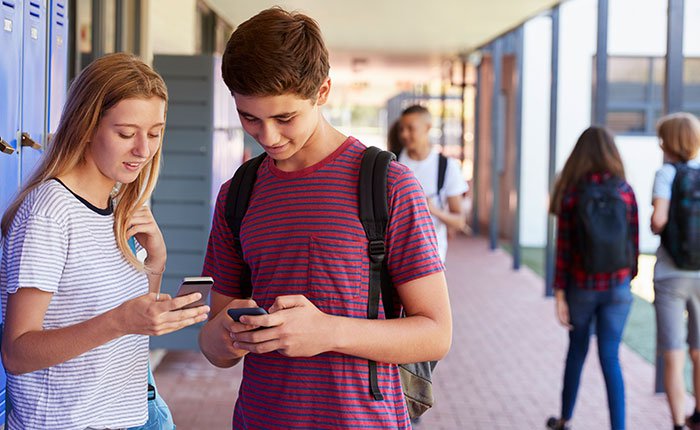Social media as an advertising platform
Social media has become a central part of the lives of adolescents and young adults,14 providing alcohol companies with opportunities to advertise their products to millions of young people cheaply.9
The alcohol industry itself has actually stated that social media marketing can reach more consumers than broadcast media, with a 600% return on investment.2
A study in the United Kingdom found that 89% of males and 91% of females aged 15-24 were exposed to alcohol marketing monthly via Facebook, and 81% of males and 73% of females were exposed to content via Youtube.14
On social media, alcohol consumption (binge drinking in particular) is normalised and often glamorised among adolescents and young adults.14 There is strong evidence that this is linked to increased alcohol consumption and alcohol-related problems.10, 14

How alcohol brands are using social media
Sponsored/paid advertisements
Social media accounts are often filled with ‘sponsored’ alcohol advertisements that ‘pop up’ in newsfeeds or stories.
These posts are similar to traditional advertising, as alcohol brands pay for them to be placed in the newsfeeds of their target audience.15 These ads tend to appear more frequently for people who search for, talk about, or purchase alcohol online, as companies can use personal data to target people ‘interested’ in alcohol. Regular alcohol buyers are targeted the most, exposing them to high levels of advertisements and encouraging impulse purchases.16
Branded social media pages
Alcohol brands also create official pages on Facebook, Twitter, or Instagram.
These pages engage with ‘fans’ through questions/polls, by posting photos and memes, hosting competitions, and sharing videos. This content is highly visual, interactive, and created to be easily shared among users.17
Through this personalised interaction alcohol brands embed their product – and drinking in general – into the everyday lives of social media users.17
In 2012, the Foundation for Alcohol Research and Education (FARE) conducted a study analysing 40 posts from Australian alcohol brands on Facebook.
They found 76 breaches of the industry’s self-regulatory advertising code – from both the brands themselves and responses from fans in the comments section, including:
- content which encouraged and celebrated excessive alcohol consumption
- crude and offensive language, as well as derogatory and vilifying comments
- content implying that alcohol can change mood or environment, and improve social or sexual prowess
- images of consumers who were clearly under the minimum age of 25.18
A similar study conducted in 2018 of popular alcohol brands on Instagram found that a number of posts:
- promoted drinking excessively or at inappropriate times
- associated drinking with positive emotional experiences
- portrayed alcohol as something that can assist in goal achievement – for example, depicting wealth (jewellery, cars, etc.) or social, athletic or professional gain (individuals in suits in an office, leading a meeting).10